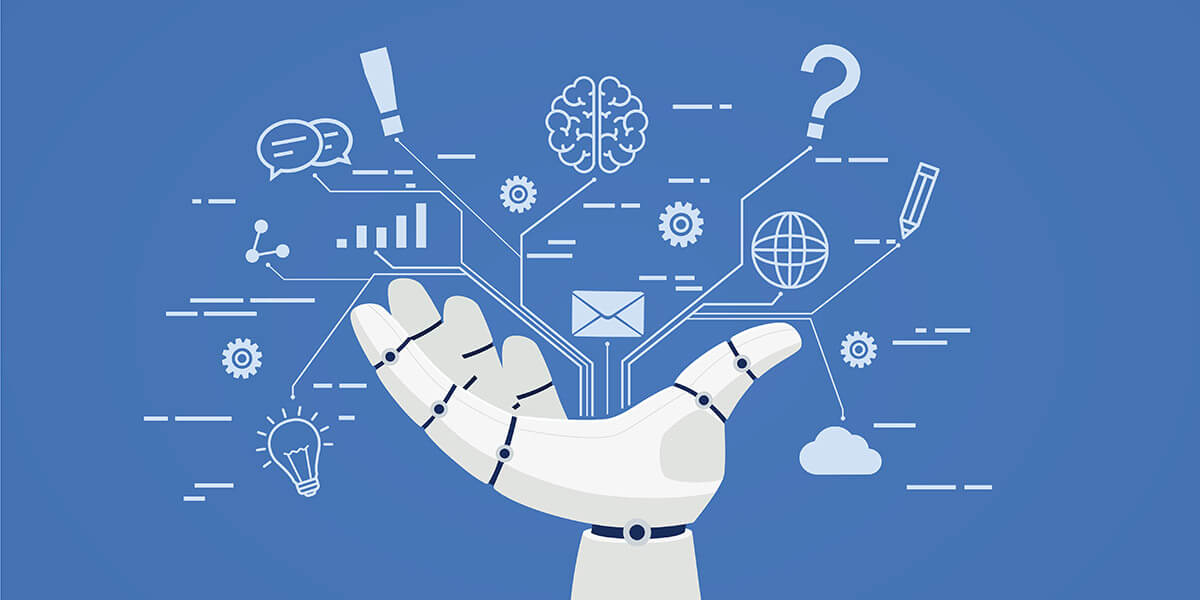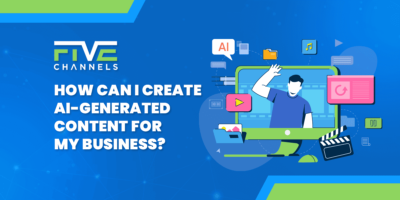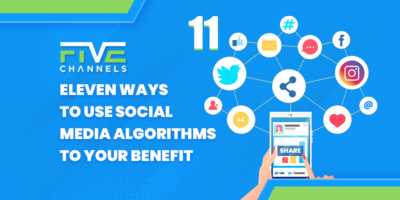Tech plays an ever-increasing role in our lives. Have you thought about how AI marketing could shape your future business plans?
For apocalypse buffs, sometimes knowing that we don’t live in a blasted apocalyptic wasteland is one of the hardest things to face in life. Each time technology develops a new tool it turns out helpful instead of life-ending.
So it goes with AI marketing. They don’t herald a world of machines exquisitely and uniquely capable of destroying humanity. Instead, Alexa helps you pick out thoughtful gifts for friends and family.
Cutting through the fever dreams of what AI marketing means to the world takes know-how. Utilizing the power it can bring your business requires initiative.
 A Note on Self-Learning Algorithms
A Note on Self-Learning Algorithms
Research on self-learning algorithms goes back more than a decade. This core component runs modern AI programs.
Essentially, a learning machine follows a learning path. The same way a child goes to a school. Over time the school systems get better, and so do algorithms.
The difference between AI and a self-learning algorithm comes down to action. Self-learning algorithms think, but they don’t act. AI acts and thinks.
An algorithm will gather data and improve its ability to gather data, but it doesn’t know how to make the data do anything. By comparison, an AI will make decisions on throughput, as well as the input.
Regardless of this difference, both rely on the same basic building block: data sets.
Dataset Quality: Noise and Richness
Not all dataset creation is equal. Techniques for cataloging data fills manuals. The quality of the cataloging directly effects the usability.
Data gathering techniques create further gaps in quality. Even well archived and robustly gathered data may run into issues of noise.
Rich datasets may contain bias and disjointed information.
AI and algorithms currently possess no internal ability to weed out what’s not important from a data set. These decisions must come from the outside. Keep this in mind when considering how to implement an AI marketing program.
Basics of AI Marketing
Simply stated, marketing strives to put an idea in front of those who need to see it. An idea can be a product, a service, or a concept. Those who need to see it gets more subjective, but still holds importance.
Marketing works best when the idea placed fits both a need and a want. So creating want becomes a secondary goal for marketing.
While still in its infancy, AI marketing shows results.
The following components reflect the key pieces of what constitutes AI.
- Analysis
- Planning
- Implementation
- Pattern Recognition
- Intelligent Data Analysis
- Database Resources and Intuitive Guesses
- Incestuous Bribery
Let’s break down what important role(s) each item performs in a marketing strategy. Then, I’ll also go over potential downsides and how to avoid them.
Analysis
The way that marketing achieves its primary goal usually comes through a three-part process. The components of analysis, planning, and implementation form this process. They work best when revisited and optimized several times over the course of a campaign.
Analysis requires data. Data comes from feedback loops that include consumer input and industry trends.
Analysis works to find patterns and trends.
Of these two, patterns feature more prominently. Patterns form from either need or want. As mentioned before, these serve a dual purpose that can feed off of each other.
A need can be a want as well, and a want can create a need. For example: at one point a computer was a luxury item. An item marketing created a want for by building up the possibilities of what computers could do.
Now not owning a computer puts a person at a serious disadvantage. Whole industries rose around computers. Now a computer fills a basic necessity for the working world.
Trends show the possibility of future patterns. They also reveal how a pattern was formed.
Knowing the history of computers and how they rose to household prominence shows something that should have been known. It was seen with the advent of automotive vehicles in the 70 years before. Handheld devices such as smartphones and tablets repeat this pattern.
AI marketing benefits from increasing the speed by which data collection occurs. It also provides more ideas about trends through advanced pattern recognition.
Planning
Utilizing patterns and trends found in analysis, planning seeks to move forward. Planning involves creating specific goals and the time frames in which those goals will be implemented.
Planning involves more than just creating steps, it also needs to understand the impact of each step and the risks associated. The risk/reward of marketing plans creates a future area for analysis.
This forms part of the feedback loop of the process. A failed plan will be analyzed and more plans will be created.
Because planning also involves timetables, understanding if a plan didn’t work because of when, not just what has to occur. It takes a lot of data to make calculations on the initial plan.
It takes even more data to adjust and optimize a plan as it is being executed.
AI marketing never stops analyzing data as part of the self-learning algorithm. This means future planning runs parallel with current planning.
Implementation
Once data analysis completes and planning steps form, implementation happens. The implementation doesn’t happen all at once. Commonly this takes several steps to complete.
Each step lined out by the planning takes a period of time to show an effect. Implementation builds on each step when things go well. It adjusts to prevent a backslide when things don’t go well.
Implementation, much like the other two steps, adjusts as feedback comes in. The first feedback, if timed right, arrives before the second step. The second before the third, and so on.
Feedback goes back to analysis through further planning and emerges as fresh implementation. The cycle adjusts at each stage and each stage takes several steps to complete.
AI marketing flattens this process by running most of the processes in parallel. As already noted, planning runs parallel with analysis easily. Getting implementation to work at the same speed is trickier.
To make implementation run at the same speed as the other two stages results need to be known before they actually form. To accomplish this, AI marketing takes advantage of virtual worlds and models.
The next three components explain how this process works.
Pattern Recognition
It is no coincidence that the most important factor in good marketing is also a cornerstone of AI development. Pattern recognition forms the backbone of the human experience. With it, humanity figured out everything from agriculture to zoologic taxonomy.
AI mimics human pattern recognition, but at a faster pace. AI digests datasets and produces guesses at what the information could indicate. Each guess either reaffirms a previous guess or disproves it.
Pattern recognition suffers from implied or explicit bias, the same as human reasoning. To clear this hurdle, AI marketing utilizes the same feedback loop that makes a campaign successful.
A false pattern runs aground faster than a true pattern. This well-understood concept runs marketing research. Without the ability to spot a false start, a marketing campaign would be over before it gets out of the pitch meeting.
Intelligent Data Analysis
Affirming a pattern early on creates a step. Each new pattern confirmation places another along the way. With enough patterns in place, data analysis can skip redundant and false premises and get to new insight.
AI leads the curve in this process. Famously an AI used this type of intelligent data analysis to work out conditions for a Nobel-winning experiment. It accomplished this task by thinking both laterally and linearly at the same time.
A marketing AI example would be considering the target demographic and region simultaneously. The AI could find the right mix of age, income, and availability to key aspects of the market area. All this while figuring out where the competition’s strengths and weaknesses lie.
By reaffirming pattern recognition, intelligent data analysis cuts past easily found information to harder to reach material. Known as deep dive or data mining activities, these processes cut through patterns to the patterns within the patterns.
Accomplishing deep dive and data mining normally requires thousands of hours of work. AI makes the processes doable in days instead of weeks. it does this through a combination of expanded database resources and intuitive guesses.
Database Resources and Intuitive Guesses
Intuitive guessing represents the most deceptive, and the most promising feature of AI marketing.
AI makes two separate guesses to achieve this effect. First, it makes guesses at which database information to pull. Second, it puts those pieces of information into patterns intuitively.
In this case, intuitive guessing works the same way as looking at a 3-D image poster. The image won’t be clear at first but requires you to see something within the seemingly random chunks of information.
The more database resources an AI taps into, the more robust a guess that can be made. For this purpose the integration of different aspects of technology become important. (Check out the note on integration technology below for more information).
Incestuous Bribery
A cautionary note. One real fear in the advances of AI marketing takes the form of algorithms reinforcing themselves. Dubbed “incestuous bribery”, this problem occurs when an algorithm uses its own pattern to affirm its pattern guesses.
Take for example a program such as the post-boosting feature of Facebook. An incestuous AI tasked with placing a post in front of a target audience may choose to place an ad for itself inside of the boosted post.
Essentially each time the Facebook app suggested the effectiveness of a boosted post it would be using data from how often it has placed itself in front of you as proof that placing something in front of you is working.
Another example would be an Amazon ad campaign paying itself to talk about itself.
If paying for a targeted ad campaign becomes paying the algorithm to produce a result, the data collected from the enterprise will be increasingly skewed. Skewed datasets create false positives and the whole thing collapses.
A Note on Integration Technology
The power of an AI grows when it has more data. Right now the industry suffers/benefits from a flood of useful applications. These applications parse data, compile figures, build charts and so on, but they don’t talk to each other.
Integration technology work on the same principles as intuitive guesses. An integrated AI makes guesses at which data from which program to include. The current model relies on a human mind to decide which programs should be talking to which.
Even when data moves across these programs the cautious inclusion slows down the process. While not all programs create unique or robust datasets, the whole point of AI is to make those guesses.
AI marketing, then, takes one further step forward in not just being powerful, but in combining the power of many tools already used in the industry.
The Future of Human Contact in Marketing
With AI working on the numbers and patterns, human team members become available for more high-level thinking. Customer and client interface times go up, workplace burn out goes down.
This takes us back to the unfounded fear of AI replacing human workers. Like most other things AI won’t do, it won’t replace human workers.
Humans still want to speak to other humans. The customer service industry exists to erase the problems caused by the machines. Mechanical and electronic conveniences always work to give humans more time to do things humans want to do.
Get Ahead of the Curve
Hopefully, you now understand the benefits of AI marketing. How it integrates what you already do with what you hope to achieve. You can get ahead of the competition by learning more about emerging marketing strategies by talking to our experienced teams.
Learn more about all of the services we provide and plan your next move. Marketing doesn’t do itself (yet), so in the meantime sharpen your skills.
Owner and Chief Marketing Officer, Jason Hall, and his team specialize in creating brand awareness / traffic and lead generation / marketing funnel and conversion optimization, while utilizing the appropriate marketing channels available within your industry. With diverse clients throughout the world, Jason's team is well connected within many industries to assist with your marketing strategies. With no long term contracts and various levels of service, Jason's team will increase the quality of your online traffic, leads, and sales.
About the author...
Located in the heart of the Emerald Coast - Destin, FL, founder and Chief Marketing Officer, Jason Hall, and his team specialize in creating brand awareness / traffic and lead generation / marketing funnel and conversion optimization / and PR campaigns, while utilizing the appropriate marketing channels available within your industry.
With diverse clients throughout the world, Jason's team is well connected within many industries to assist with your marketing strategies. With no long term contracts and various levels of service, Jason's team will increase the quality of your online traffic, leads, and sales.









